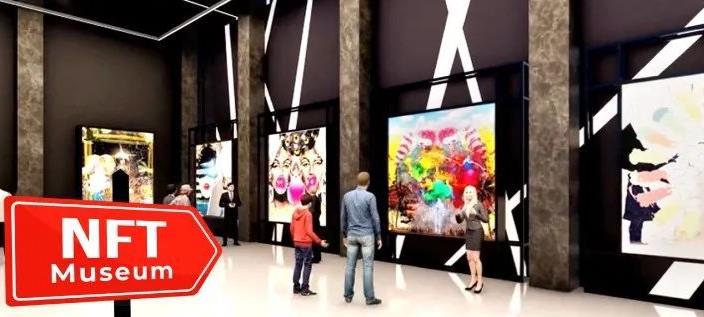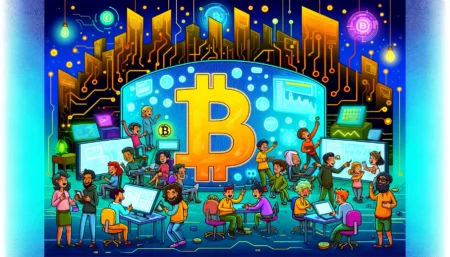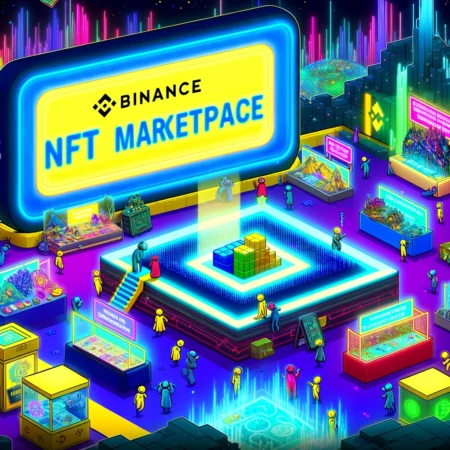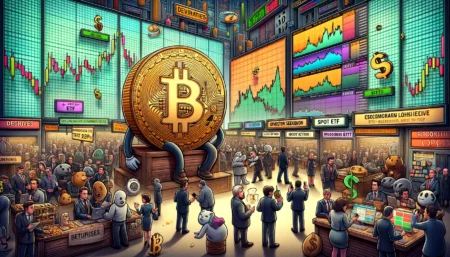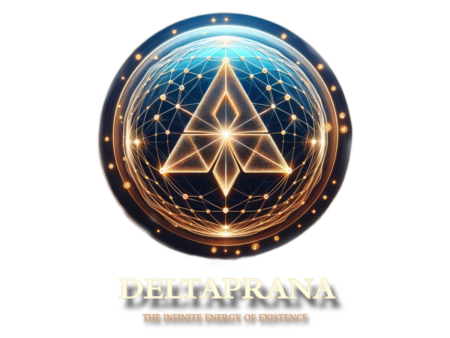World’s first NFT museum opens in Seattle
The world’s first NFT museum has opened, and it’s offline. The 3,000-square-foot Seattle NFT Museum opened to the public on Thursday, claiming it’s the first NFT art museum and gallery.
For a museum centered on new and developing technologies, it follows the ways of many established institutions. Inside, it looks like any white cube, with text and artwork on the walls displayed on a high-resolution screen installed.
This museum pushes the boundaries between virtual and physical. Displaying digital artwork in a physical space has its own challenges. Seattle’s NFT Museum overcame this challenge by partnering with Samsung to display the vibrant colors and perpetual motion of digital works.
From 85″ to 32″ crystal clear windows, portrait and landscape, viewers will experience an immersive artistic journey. Each installation has a link to metadata and artist stories to help viewers discover something interesting in each piece.
Part of the museum’s mission is to increase and improve knowledge about NFTs. Text on the wall serves as an explainer for visitors to learn more about blockchain art, and staff will reportedly be present for further discussions.
Over the past year, NFTs have been popping up online and in the art world since Beeple’s artwork sold for $69 million at Christie’s in March 2021.
However, the museum notes that the history of NFTs goes far beyond that, with its origins dating back to a 2014 piece by Kevin McCoy. The piece, titled Quantum, features flickering octagons and contains an “NFT-type certificate of ownership” after it was minted on the Namecoin blockchain eight years ago.
McCoy recently sold a version of the NFT through a Sotheby’s auction last June. It was bought for $1.4 million.
Works in the inaugural exhibition at Seattle’s NFT Museum include glossy, futuristic and fantasy figures by Los Angeles-based 3D artist Blake Kathryn.
There are also colorful 3D environments visualized by Neon Saltwater, rendering incredible interior spaces, including bedrooms filled with rainbow hues.
The museum also features photographs by Charles Peterson, best known for documenting the trash scene in Seattle and other parts of the Pacific Northwest in the late 1980s and early 1990s. His work includes black and white performance images of Alice in Chains, Soundgarden and Nirvana.
The museum has partnered with NFT collector Aaron Bird to loan pieces from his collection, which includes pieces from Larva Labs’ CryptoPunks series and spin-off art from Tyler Hobbs and Snowfro.
In a statement on the museum’s website, Seattle NFT Museum co-founder Jennifer Wong explained the museum’s goals. “We want to create a space to serve the NFT community while helping Seattle become a hub for NFT and blockchain innovation,” she wrote. “We’re not experts, we’re here to learn as much as anyone. That’s why we rely on feedback and support from NFT enthusiasts to continue developing our vision.”
Legal Issues
The reason why museums have been slower to respond than other areas of the art world may have to do with their red tape about what can and cannot be done about works in the public domain.
For the sale of Leonardo da Vinci’s The Madonna Litta and Claude Monet’s Corner of the Garden at Montgeron for the NFT version of the Hermitage Museum, this The field experiment is simply to explore a new format in a country where most cryptocurrency trade has been outlawed. According to curator Michael Piotrovsky, institutions aren’t even trying to make money. Michael is running an NFT sale in conjunction with Binance, a cryptocurrency trading platform riddled with legal issues.
The Russia-based museum has rebranded famous works in its collection into two NFTs – one of which will be a digital token that will live in its collection forever and the other to be distributed to eventual buyers. “Our financial problems are in the billions,” Piotrowski told Forbes Russia. “We’re not serious about using tokens to solve financial problems…Right now, we’re just trying to see what kind of acceptance this format can get.”
The approach taken by the Hermitage Museum is based on Russia’s strict cryptocurrency trading laws, which went into effect in January. Museums have found a way to trade in compliance with the law — although they haven’t released any precise information on how this works. Some argue that it is exploiting a loophole in the new legal text that does not explicitly mention NFTs.
Perhaps unsurprisingly, the Uffizi Gallery is one of the quickest to enter the new realm of NFTs. Led by its upstart curator Eike Schmidt, the institution that houses Botticelli’s The Birth of Venus has also quickly ascended On the stage of TikTok, and even launched a fun-filled cooking show during the Italian epidemic blockade. The Uffizi entered the NFT space with enthusiasm, selling Doni Dondo for €140,000, splitting the profits equally with their tech partner Cinello.
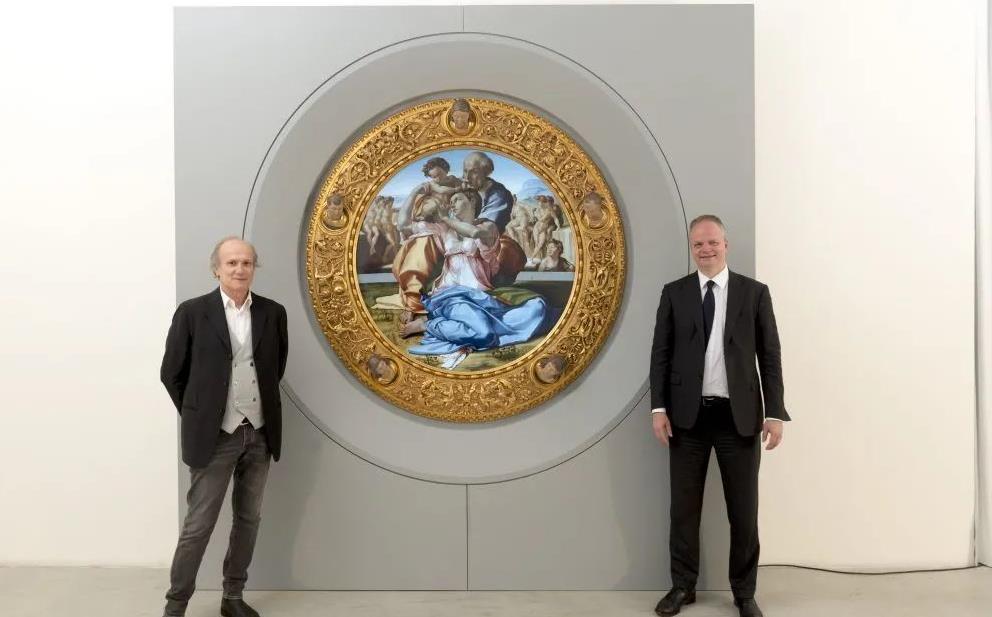
At the time of the aforementioned NFTs, the museum announced that they would also sell other classic works in the collection as NFTs: The Birth of Venus, Raphael’s Madonna del Granduca and Carava Joe’s Bacchus is on the list, waiting to be turned into an NFT.
“Part of it is spreading knowledge about these works of art,” Schmidt told artnet News, “but just like in the past, you can’t run a museum just by selling posters and postcards, so we can’t run a museum of the future with digital reproductions. .”
According to Schmidt, the upcoming sale will be put on hold for the time being, and the Italian Ministry of Culture is studying legislation on digital sales, in particular NFT copies of works from the National Museum’s collection. “Hopefully we don’t have to wait too long because we don’t want to miss the next phase of our sales plan,” he said.
While he looks forward to continuing the NFT sales project (pending government approval), he is also convinced that the real value of NFTs to museums lies elsewhere than sales.
“Blockchain technology is much more interesting for new creations of art, as well as for other parts of the museum, such as ticket sales and smart contracts. We are actively working on this.”
